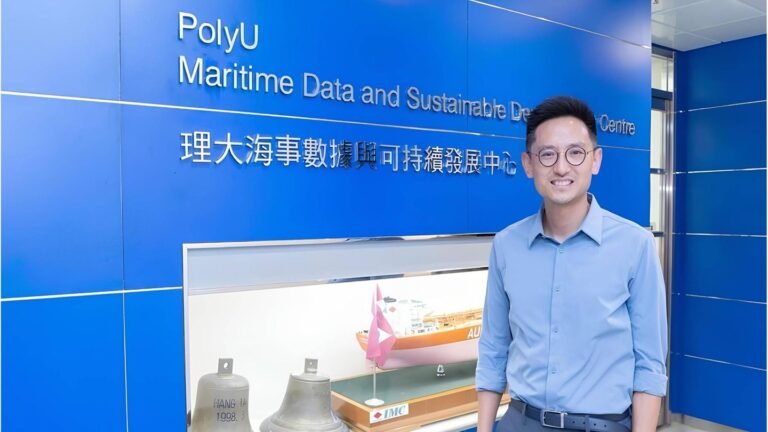The Hong Kong Polytechnic University (PolyU) has announced advancements in maritime and shipping management through the application of AI and big data technologies.
The Maritime Data and Sustainable Development Centre (PMDC) at PolyU has developed tools aimed at improving vessel monitoring and emergency response, particularly in the context of Hong Kong’s susceptibility to typhoons.
Among these innovations is a system for estimating the supply and demand for typhoon shelter berths for local vessels.
The research team, led by Prof Yang Dong, has collaborated with the Hong Kong Marine Department to create a monitoring technology that employs unmanned aerial vehicles (UAVs) and deep learning algorithms.
This system achieves a 98.6% accuracy rate in identifying and classifying local vessels, allowing for improved predictions regarding typhoon shelter berth requirements from 2022 to 2035, according to PolyU.
The implementation of this technology is anticipated to streamline the government’s monitoring and emergency management processes while reducing operational costs.
The findings from this research have been adopted by the Hong Kong Marine Department as a reference for planning local typhoon shelters.
The technology is also applicable in areas such as port state control inspections and managing port congestion.
Future plans include developing data collection techniques that utilise video and image processing, further integrating deep learning to enhance vessel regulation.
Yang Dong said: “AI and big data technologies are bringing revolutionary changes to the maritime and shipping industry.
“These innovative assessment and monitoring tools combine domain knowledge in the maritime field with cutting-edge technology, significantly improving the speed, quality, and accuracy of data collection.”
In addition to berth management, the research team has addressed the challenges of obtaining timely maritime statistical indicators.
Traditional methods of data collection have proven to be inefficient and prone to errors. To combat this, Prof. Yang and his team partnered with Tsinghua University to create advanced algorithms for processing Automatic Identification System (AIS) data.
This collaboration has resulted in a global shipping and trade network database and an online platform that calculates key indicators, including port congestion and connectivity indices, in real-time.
The research aims to enhance the understanding of maritime dynamics and support decision-making processes within the industry.
Furthermore, the team developed a model for recognising fishing vessel behaviour patterns, which utilises a semi-supervised machine learning framework to identify abnormal fishing activities with a 90% accuracy rate.
This model is designed to improve the management of fishing vessels in Hong Kong waters.
The research also involved assessing the risks associated with large cruise ships navigating Hong Kong’s central channel by integrating various maritime data sources.
Recent developments include the use of graph neural networks to predict vessel trajectories in busy waterways, contributing to enhanced navigation safety.

